ZHANG DAQIAN (1899-1983)
Guanyin After Early Tang Style
ZHANG DAQIAN (1899-1983) Guanyin After Early Tang Style Scroll, mounted and framed, ink and colour on silk 142 x 72.5 cm. (55 7/8 x 28 ½ in.) Entitled, inscribed and signed, with two seals of the artist Dated nineteenth day of second month, dinghai year (1947) PROVENANCE: Purchased by the original owner through Zhang Daqian’s exhibitions in Shanghai in 1940’s, and passed down by descent. EXHIBITED: Taipei, National Museum of History, Special Exhibition of Art and Cultural Relics of Dunhuang , 12 November, 1967. Zhang Daqian embarked on an expedition to Dunhaung in 1941 to study the magnificent Buddhist murals. The expedition proved to be a creative breakthrough for Zhang – when he returned in 1943, he developed a new style and reached the zenith of his mastery for figure paintings. Learning from the ancient murals in Dunhuang, Zhang paid special attention to the use of brush, colour, costume, and the rendering of the human body. Guanyin After Early Tang Style was based on Bodhisattva Holding Plate (figure), located in Dunhuang Mogao Cave 401 which was built in the Sui Dynasty. At the bottom part of the cave are various depictions of bodhisattvas in differing poses. Guanyin After Early Tang Style was based on the easternmost bodhisattva on the northern wall, a representative mural from the early Tang Dynasty. Though mimicking the composition of the Tang mural, Zhang Daqian in contrast, uses relatively soft and beautiful colours. In the painting, he depicts the bodhisattva’s slender figure adorned with a crown inaid with firing pearls, long celestial robes gently draping over her feet, her right hand supporting a basin lined with lazurite beads, gently holding a gauze banner in her left with her feet turned out standing on blue lotuses. The bodhisattva is overtly decorated, adorned with beaded necklace and earrings, with scarves draped around shoulders to accompany flowing robes. Zhang Daqian’s use of fine lines further extenuates the bodhisattva’s slim waist, elegant fingers, and even the dignified pose. Furthermore, his dexterity in executing textures differently and beautifully is fully evident in the transparency of the glass in the basin to the ephemeral silk drapes, resulting in a majestic, noble painting of the very finest quality in Zhang’s gongbi portraits.
ZHANG DAQIAN (1899-1983)
Guanyin After Early Tang Style
ZHANG DAQIAN (1899-1983) Guanyin After Early Tang Style Scroll, mounted and framed, ink and colour on silk 142 x 72.5 cm. (55 7/8 x 28 ½ in.) Entitled, inscribed and signed, with two seals of the artist Dated nineteenth day of second month, dinghai year (1947) PROVENANCE: Purchased by the original owner through Zhang Daqian’s exhibitions in Shanghai in 1940’s, and passed down by descent. EXHIBITED: Taipei, National Museum of History, Special Exhibition of Art and Cultural Relics of Dunhuang , 12 November, 1967. Zhang Daqian embarked on an expedition to Dunhaung in 1941 to study the magnificent Buddhist murals. The expedition proved to be a creative breakthrough for Zhang – when he returned in 1943, he developed a new style and reached the zenith of his mastery for figure paintings. Learning from the ancient murals in Dunhuang, Zhang paid special attention to the use of brush, colour, costume, and the rendering of the human body. Guanyin After Early Tang Style was based on Bodhisattva Holding Plate (figure), located in Dunhuang Mogao Cave 401 which was built in the Sui Dynasty. At the bottom part of the cave are various depictions of bodhisattvas in differing poses. Guanyin After Early Tang Style was based on the easternmost bodhisattva on the northern wall, a representative mural from the early Tang Dynasty. Though mimicking the composition of the Tang mural, Zhang Daqian in contrast, uses relatively soft and beautiful colours. In the painting, he depicts the bodhisattva’s slender figure adorned with a crown inaid with firing pearls, long celestial robes gently draping over her feet, her right hand supporting a basin lined with lazurite beads, gently holding a gauze banner in her left with her feet turned out standing on blue lotuses. The bodhisattva is overtly decorated, adorned with beaded necklace and earrings, with scarves draped around shoulders to accompany flowing robes. Zhang Daqian’s use of fine lines further extenuates the bodhisattva’s slim waist, elegant fingers, and even the dignified pose. Furthermore, his dexterity in executing textures differently and beautifully is fully evident in the transparency of the glass in the basin to the ephemeral silk drapes, resulting in a majestic, noble painting of the very finest quality in Zhang’s gongbi portraits.
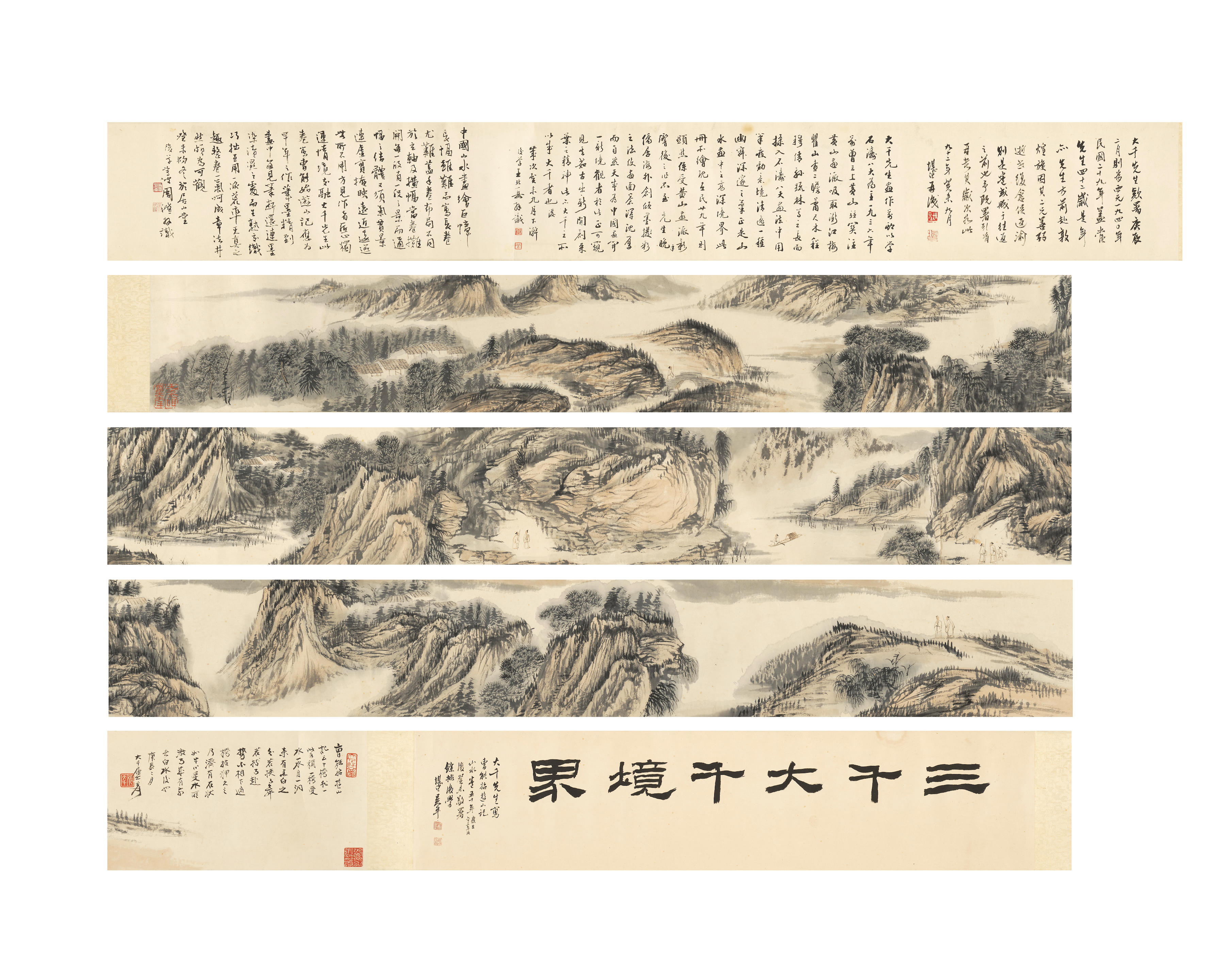
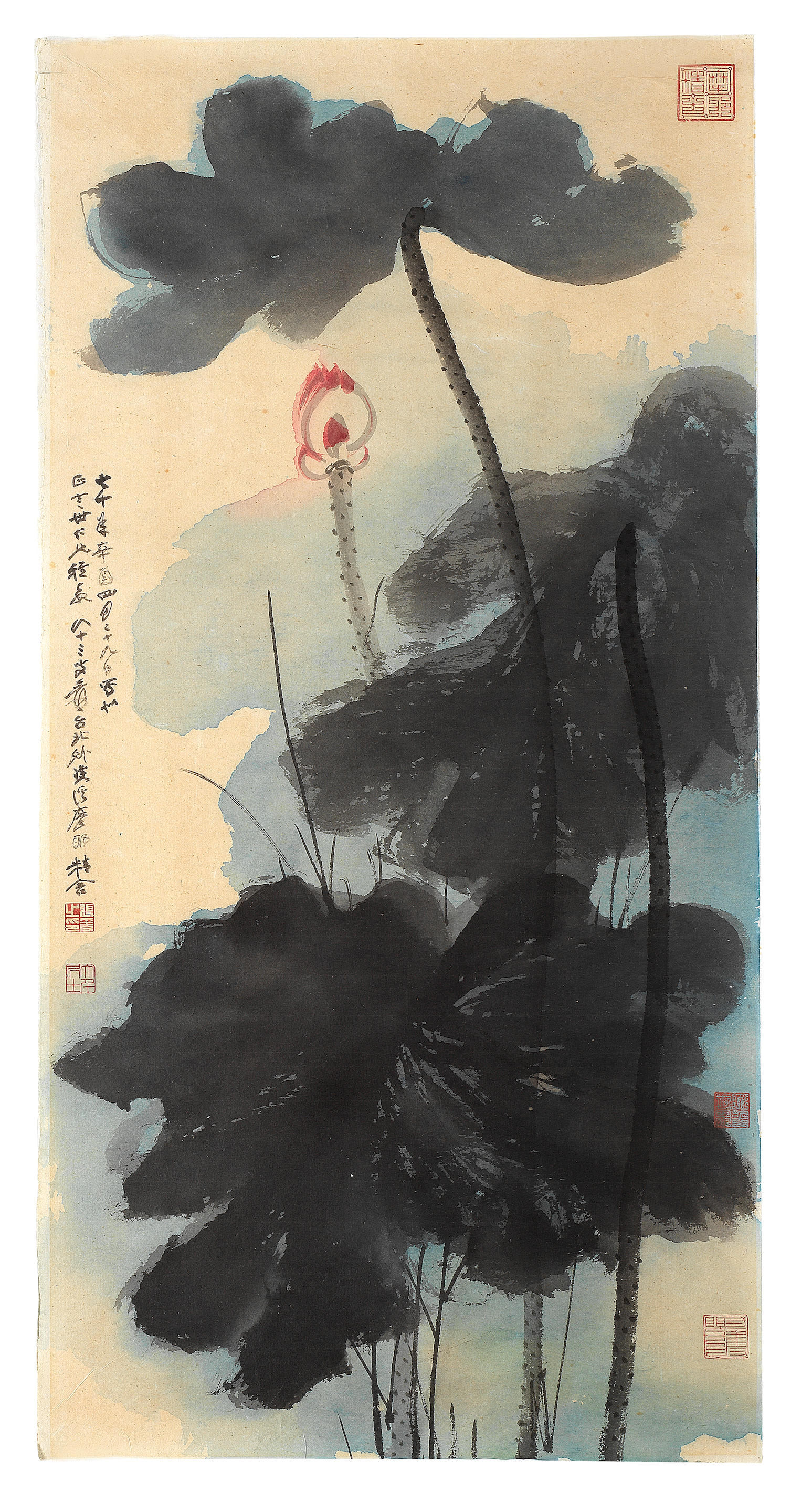
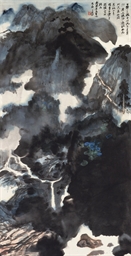


.jpg)
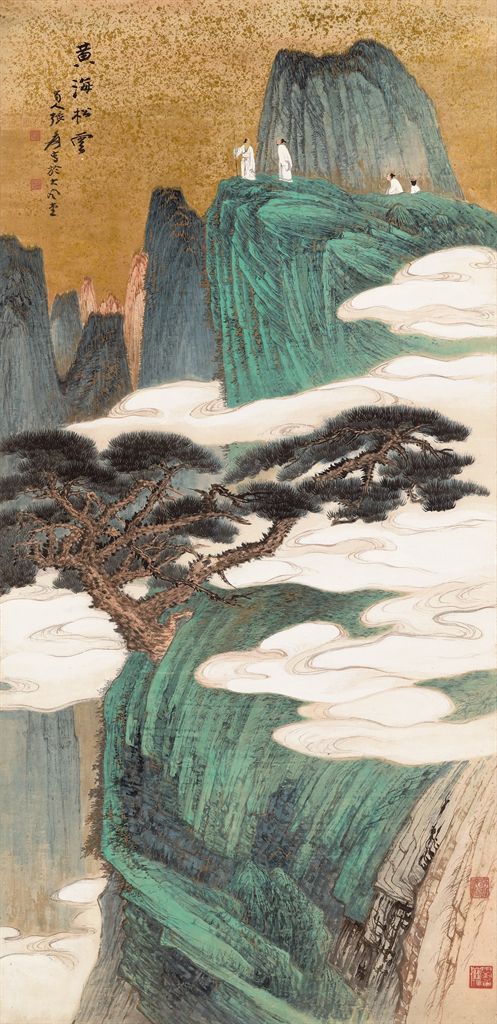
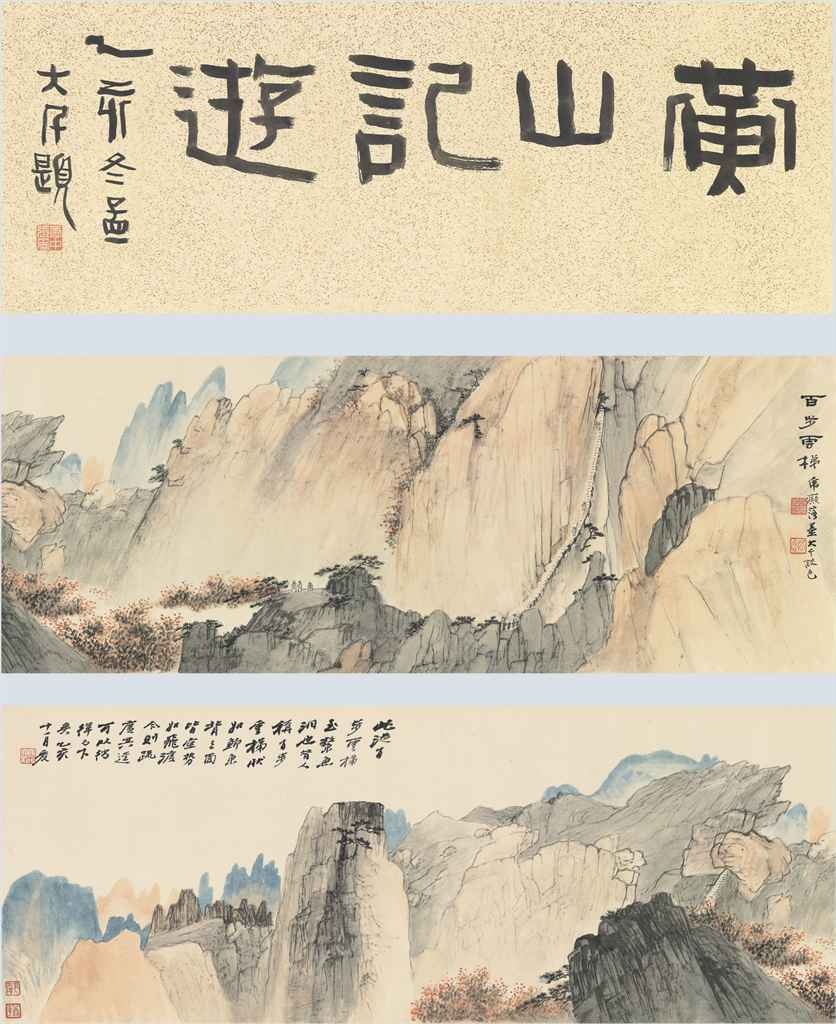

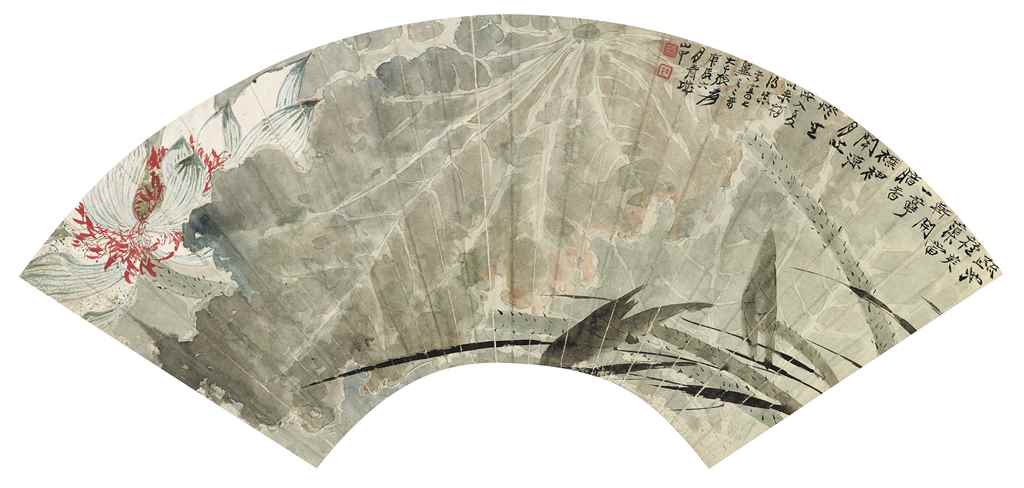


.jpg?height=400)
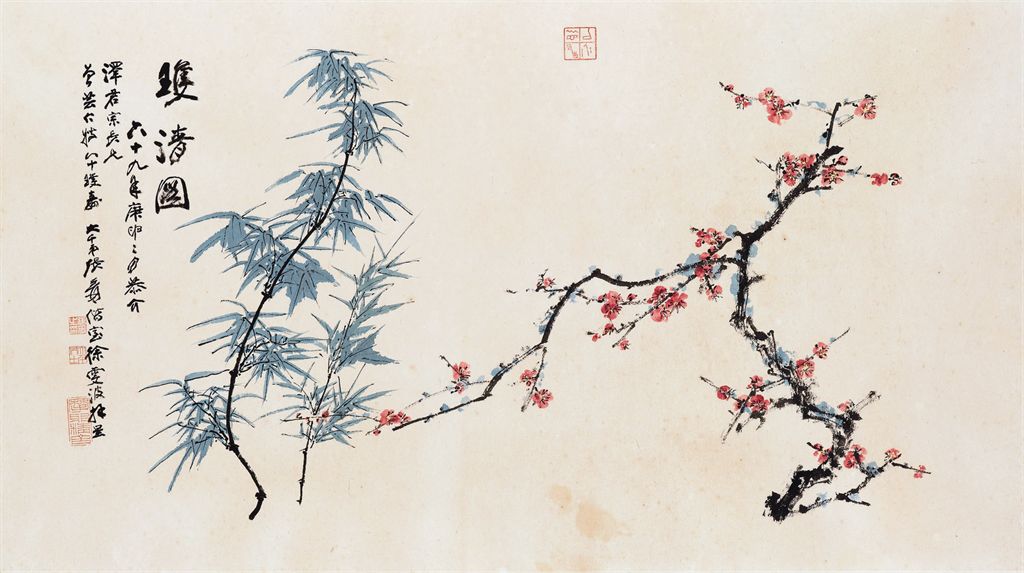
Testen Sie LotSearch und seine Premium-Features 7 Tage - ohne Kosten!
Lassen Sie sich automatisch über neue Objekte in kommenden Auktionen benachrichtigen.
Suchauftrag anlegen